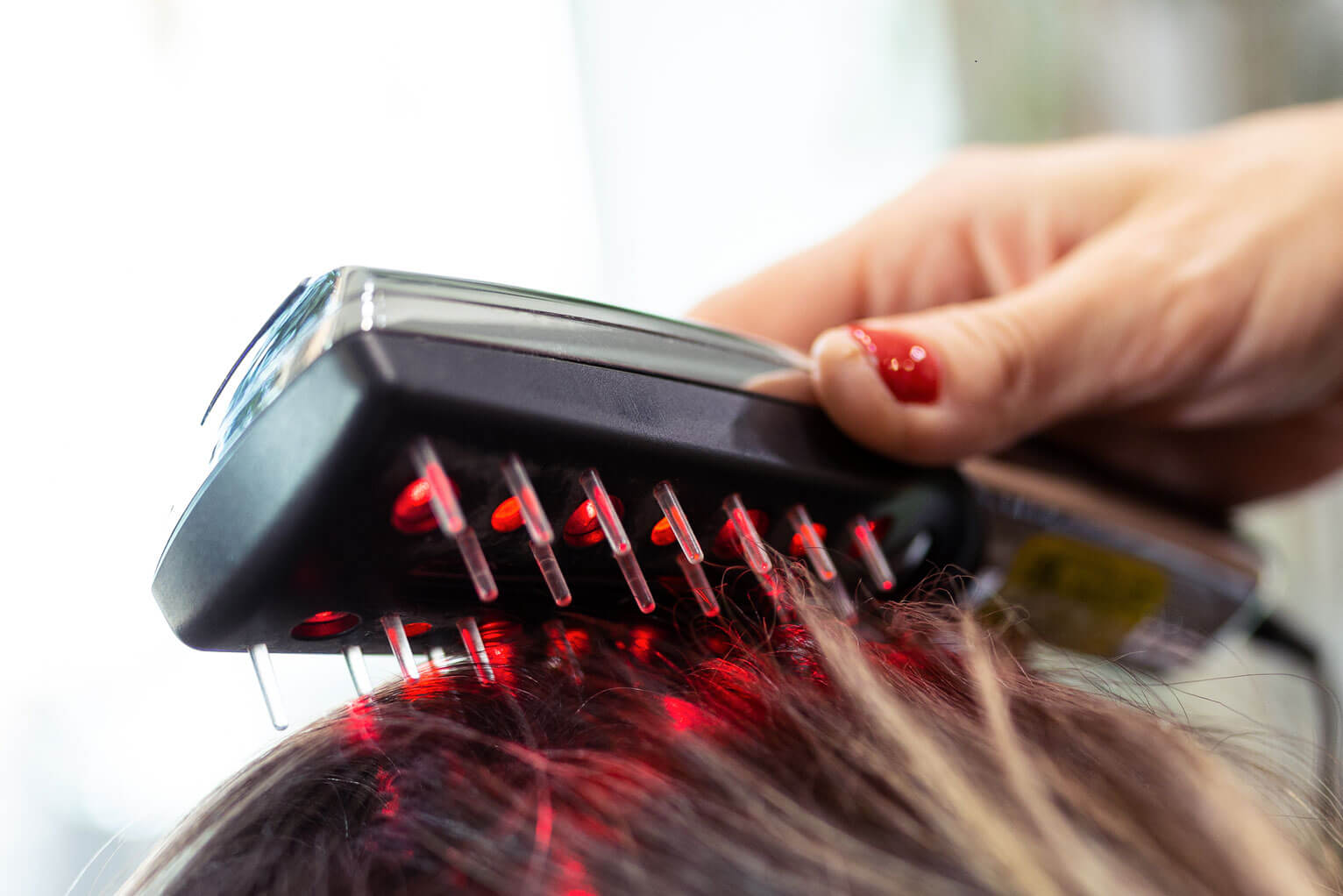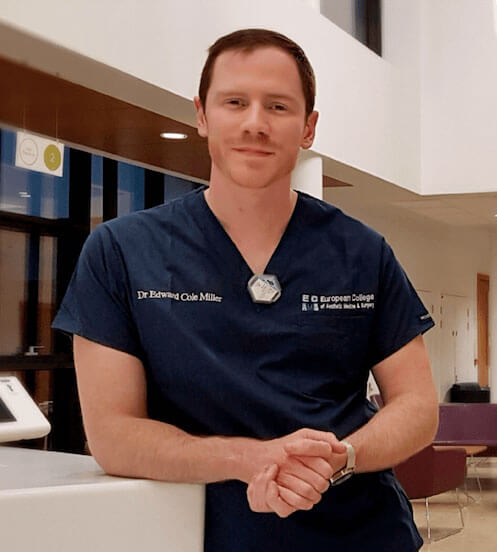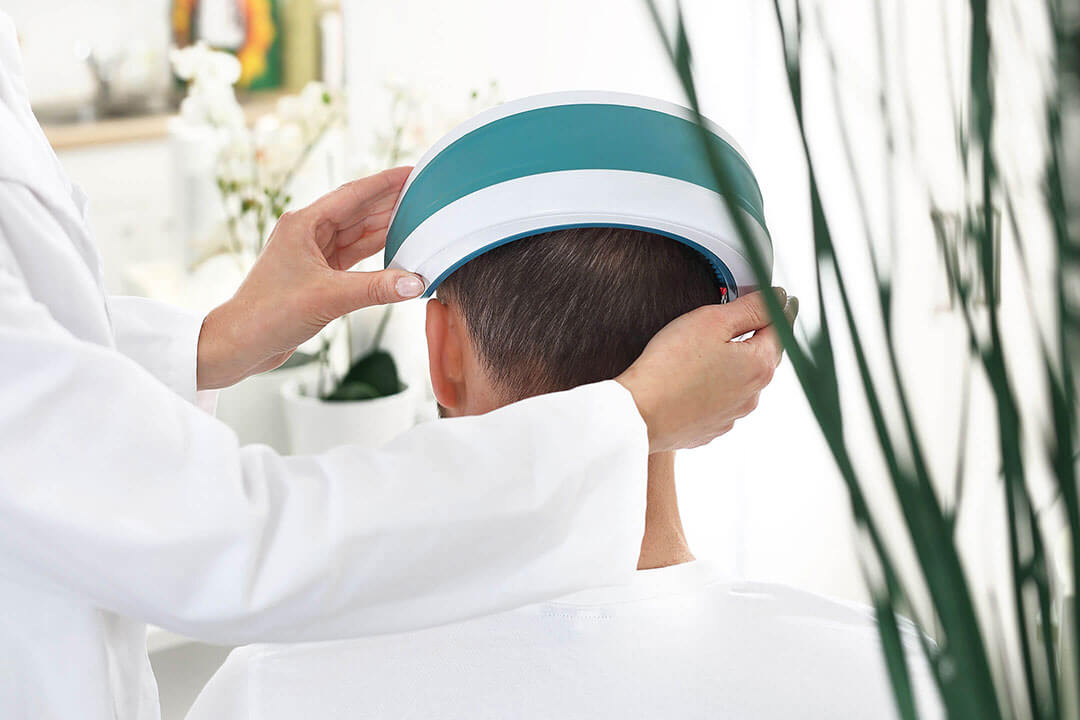Low level laser therapy isn’t yet as well-known or widely used as other methods of hair restoration. But that could change quickly, as word spreads about the efficacy of this innovative medical technology.
What is low level laser therapy?
Low level laser therapy for hair loss is a noninvasive procedure that bombards an area of the scalp with red, near-infrared, or infrared laser light. With regular and repeated LLLT treatments, hair follicles that have atrophied and gone into hibernation can be reenergized and restarted, leading to substantial new hair growth.
In general, the length, thickness, density, strength, and overall health of the new hair will be indistinguishable from existing hair. This testifies to the deep rejuvenating impact of LLLT as a therapy.
Keep in mind that LLLT treatments must continue for several months before results can be expected. LLLT devices for hair loss should be used at least once every other day on a continual basis. Each treatment session should last from 10 to 30 minutes. After a few months of treatments, your friends might not even recognize you!
You don’t need to go into a clinic for LLLT. According to a review in the journal Lasers in Surgery and Medicine, LLLT devices for home use exist, but they can be quite expensive. FDA-approved products for LLLT include combs and helmets. Other non-FDA approved products, like hand-held devices, are also available.
Who will LLLT help?
According to a study in the American Journal of Clinical Dermatology, low level laser therapy can be an effective remedy for androgenetic alopecia (AGA), the disorder responsible for most people’s hair loss. AGA is commonly referred to as male pattern baldness. This is the condition most men are hoping to cure when they experiment with hair restoration treatments.
AGA will develop in about half of all men over the age of 50. A major influencing factor that causes it is the hormone testosterone and its derivative DHT, which can suppress hair growth. Low level laser treatments can disrupt the conversion of testosterone to DHT, which invigorates resting hair follicles and brings them back to life. A Medical Lasers journal study reported that LLLT may also be appropriate for the treatment of alopecia areata, an autoimmune disorder that attacks the hair follicles and causes hair to fall out in patches.
Although low level laser therapy is highly effective at stimulating sleeping hair follicles, it’s more likely to succeed if used in the early stages of hair loss. Hair follicles that remain in the dormant stage for a long time are less likely to grow new hair.
Does low level laser therapy work?
In the late 1960s, a Hungarian cancer researcher named Endre Mester discovered, quite by accident, that low level laser beams could rejuvenate damaged hair follicles and launch a new burst of hair growth in mice. While high-energy laser light could damage human tissue, low-power lasers that produce light in the red-to-infrared range lack the intensity to cause any harm.
In fact, low-power lasers do just the opposite, and actually trigger healthy cellular activity. Since then, an editorial in the Photomedicine and Laser Surgery journal reports that numerous clinical studies have verified the effectiveness of LLLT.
LLLT research has uncovered substantial therapeutic benefits associated with red-to-infrared laser light exposure. According to a study in the Seminars in Cutaneous Medicine and Surgery Journal, low level laser therapy can help:
- Speed the healing of wounds
- Reduce joint or muscle pain
- Treat inflammatory conditions like acne and psoriasis
- Regenerate damaged nerves
More recently, LLLT has been proven to work as a remedy for hair loss in men and women, especially associated with androgenetic alopecia.
In Lasers in Surgery and Medicine review, a group of researchers poured over data from 11 major studies on the effects of low level laser therapy on hair loss. In nine of the 11 studies, they found statistically significant improvements in total hair count and hair density. Researchers also found that statistically significant improvements in hair thickness and strength had been reported in two of these studies.
LLLT hair growth is a real phenomenon, as the research makes abundantly clear. A Journal of the American Academy of Dermatology study analyzed the results of five research projects that examined the impact of minoxidil, finasteride, and low level laser light therapy on hair loss caused by androgenetic alopecia. Each of these studies confirmed the effectiveness of all three methods against AGA in men, making it clear that low level laser therapy is a worthwhile and sensible option for men who have this condition.
LLLT for hair loss
If you’re ready to try something new to reverse your hair loss, low level laser therapy could be an attractive option for many reasons:
- It’s non-invasive: Low level laser light will not damage the skin of your scalp in any way.
- It has no known side effects: LLLT for hair loss is one of those rare medical procedures that carries no risk and has no downside, since low level laser light cannot harm living tissue.
- It can help people who’ve had no luck with other methods: Low level laser therapy is known to work for at least some people who’ve failed to achieve results with more commonly used products, like minoxidil or finasteride.
- It promotes natural healing: Low level laser therapy rejuvenates the scalp’s inherent ability to grow hair freely and naturally, which is something it has in common with treatments like microneedling. LLLT hair growth requires no additional chemical or surgical inputs.
While LLLT is risk-free, if you’ve been taking medications that have a photosensitizing effect, the Wisconsin Department of Health Services recommends delaying treatment. These substances cause chemical alterations in the skin that make it overly sensitive to light, including the light that’s emitted by a low-power laser.

LLLT devices like combs can be easy to use at home, but many come with a hefty price tag
Hair loss: treatable or not?
Low level laser therapy is a safe and effective way to treat hair loss. However, LLLT will not work for everyone. Your chances of achieving good results will be reduced if you’re trying to stimulate hair growth in areas where hair loss occurred several years earlier.
Another drawback of LLLT is the price. FDA-approved home LLLT devices can cost you up to a few thousand dollars to purchase, though laser combs are typically a bit cheaper than fixed headwear. Your family might think you look a little silly sitting around the house wearing a helmet all the time, too.
If you’re still considering other alternatives, there are many hair kits that can help promote healthy hair and scalp skin. These hair kits, which are typically for home use, include over-the-counter products like gentle shampoos and popular hair loss products, like minoxidil.





